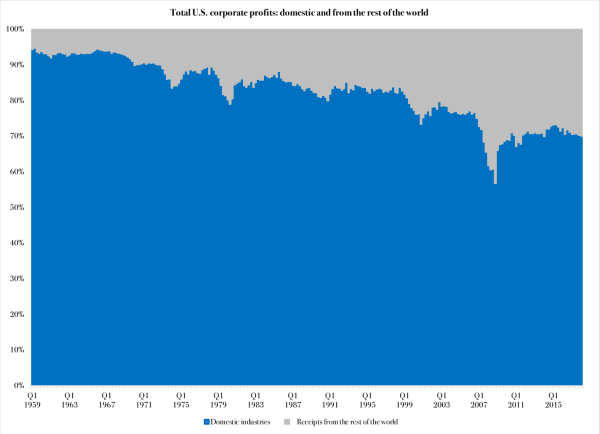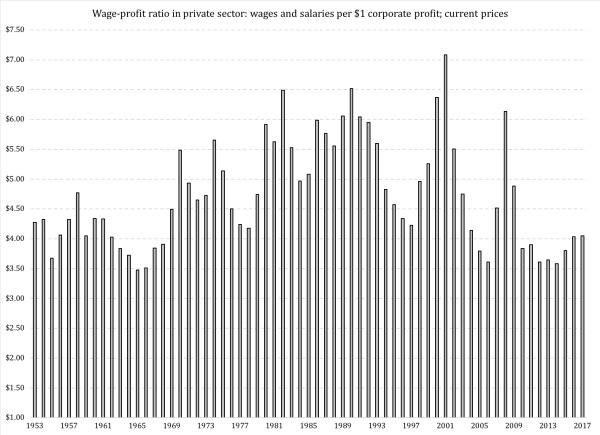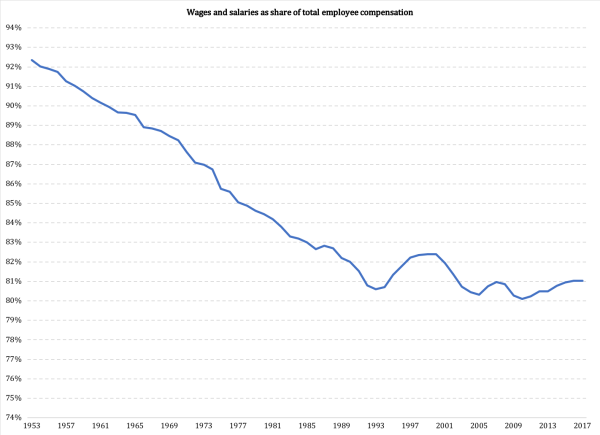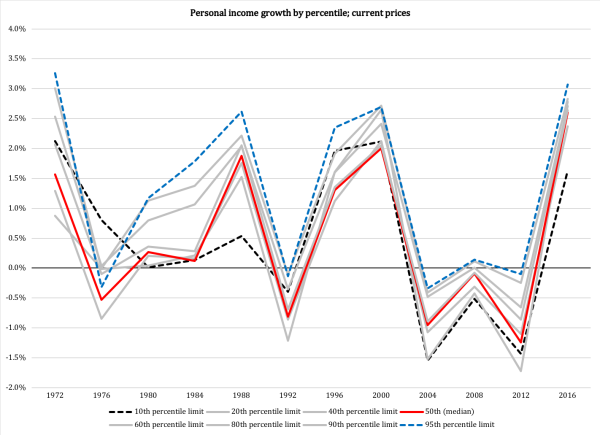It is easy to laugh at the rise of socialism in the Democrat party and to dismiss it as some crazy left-wing showcase of monumental ignorance. In reality, socialism is the next logical step for the American left in general. The egalitarian ideology from Europe’s welfare states has already conquered America and de facto turned us into an egalitarian country.
Their means to the end – an eradication of the economic differences between people – is an endless expansion of government. This, of course, leads to all kinds of problems, some of which have been nicely explained by Dan Mitchell. Unfortunately, unrelenting logic does not always work on the left as they spread their myths thickly across the political debate.
One of their myths is about economic growth, precisely the issue Dan Mitchell addresses. Back in 2015, Senator Bernie Sanders (I-VT) explained:
“Unchecked growth – especially when 99 percent of all new income goes to the top 1 percent – is absurd,” he said. “Where we’ve got to move is not growth for the sake of growth, but we’ve got to move to a society that provides a high quality of life for all of our people. In other words, if people have health care as a right, as do the people of every other major country, then there’s less worry about growth. If people have educational opportunity and their kids can go to college and they have child care, then there’s less worry about growth for the sake of growth.”
Heather Boushey, designated chief economist in the never-to-be Hillary Clinton administration, recently echoed these sentiments, albeit somewhat more formally. What she and Sanders gave voice to was not ignorance of basic economic laws, but indifference to them. When the economy runs out of growth – and egalitarians run out of other people’s money – they morph into full-blown socialists, proposing outrageous ideas like government confiscation of businesses.
Some of them are already envisioning this future as logic and thoughtful dialogue fly over their heads. Their goal is not to build prosperity, but to redistribute income and wealth until there are no economic differences between people. If they have to trample on growth to get there, they will.
Another popular socialist myth is that profits are evil. Specifically, as the Occupy Wall Street clowns tried to have us believe, the argument is that the financial industry is swimming in profits. In reality, the profits in that sector are dwarfed by the profits in non-financial industries:
Figure 1

Source: Bureau of Economic Analysis
Non-financial corporations are everything from Google to Delta Airlines to John Deere to Norcom that makes the paper that college students use to scribble down anti-capitalist rhetoric in class.
The left’s anti-profit rhetoric often includes calls for the confiscation of America’s businesses. Their unhealthy obsession with other people’s money leads them to ignore another important fact about corporate profits: an increasing share is made abroad. Our businesses have a competitive edge in the global economy, contributing to their growth and their ability to keep and create new jobs here in the United States:
Figure 2

Source: Bureau of Economic Analysis
If our businesses were socialized, how competitive would they be on the global market? How many of you remember export products from behind the Iron Curtain during the Soviet era? How many large North Korean industries are competing on the global markets? Cuban? Even Venezuelan?
Socialists also believe that workers are being exploited, that capitalists take more and more of the “surplus value”, also known as business sales revenue. In reality, since the 1950s, the wages and salaries paid out by private businesses has remained relatively stable vs. corporate profits:
Figure 3

Source of raw data: Bureau of Economic Analysis
On top of this, workers have gained more benefits. Not calculated in the wage-and-salary part of Figure 3 are assorted benefits that employers provide for their workers. Those benefits have grown over the years as part of the compensation package that workers receive, pushing the the wage-and-salary share of employee compensation down from over 90 percent in the 1950s to just over 80 percent today:
Figure 4

Source of raw data: Bureau of Economic Analysis
The growth in benefits and the steady long-term ratio of wages to profits, suggest that American workers are relatively better off today than they were half a century ago. Over time, the exact opposite has happened compared to socialist doctrine.
We also hear that the rich are becoming richer and the poor are becoming poorer. Again, socialists rely on myths and half-truths. There is a point to be made that lower-income families have benefited less than higher-income families, but over the long term, incomes in all brackets have followed largely the same pattern of growth.
Figure 5 looks a bit messy, but there is a point to the mess: the red function represents median income; the blue dashed function represents the highest, 95-percentile income bracket; the black dashed function represents the lowest, 10-percent income bracket. All other brackets are depicted in grey. The only income group that has consistently fallen behind the others are those at the very bottom:
Figure 5

Source: Census Bureau
The point, again, is that even the lowest income bracket has benefited when the economy has done well. In fact, in the 1990s their earnings rose faster than median income, and in 2012-2016 they experienced a similarly sharp rise in income as those in higher income percentiles.
In short: it pays to make more money, but that does not mean it does not pay to make less.
Overall, the American workforce is doing fairly well. That is not to say we don’t have problems; for one, our GDP growth rate has trended down lately, and it has not been until the last couple of years that workers have begun seeing some real growth in earnings again. However, to suggest that we solve those problems by means of socialism is to suggest that we try to cure a cold with blood letting.
Which, by the way, is pretty much what socialism is all about: it slowly bleeds people to death by means of financial, emotional, social and intellectual attrition.
———
Image credit: Gage Skidmore | CC BY-SA 2.0.

